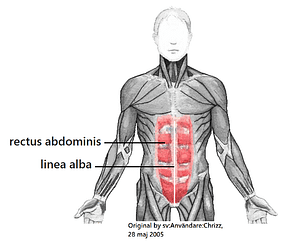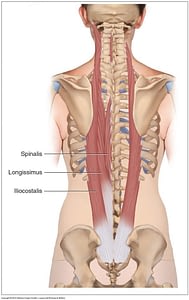Core Exercise: What you need to know
By: Dr. Daniel Klerer D.C.
For many chronic low back pain patients, and some acute pain patients, the #1 recommendation for health sustainable over time is to “strengthen your core”. This is a very important concept to understand and even more important to do it properly. Too often, patients claim to be doing “core work”, and that “core work” is contributing to their low back pain. This article is meant for everyone- those who have never felt low back pain in their life, those suffering from disc herniations, bulges or degenerative discs and even those suffering from multiple episodes of low back pain per year.
Disc herniations and disc bulging are tell tale signs that there either wasn’t any lumbar spine stability or that there is no longer stability through that zone. The less stability, the more likely that disc will get worse, with or without surgery!
Doing abdominal exercises with the goal of getting a 6 pack or having strong abs is usually a recipe for disaster for those with structural damage, functional issues in the spine, and can lead to early degenerative changes in otherwise healthy spines. These abdominal exercises (eg. Crunches, Russian twists, V-ups) that involve trunk flexion or rotation are dangerous to our spine, healthy or not.
If you have ever been in my office, you most likely will have heard me talking about off-loading your spine. Whether changing your sitting position, taking breaks, or modifying certain exercises, it is one of my main focuses in order to help limit pain and help prevent chronic issues. The exercise involving a crunch, for example, not only loads the spine with pressure from the diaphragm but also puts the spine with load into full flexion and adds repetition. McGill, talks about repetitive loading on the spine and its negative affects.
So the question is, if loading and repetitively flexing or rotating the spine is bad, what can we do that will help the spine? Before we go into more, we need to dive into the anatomy:
- Prime Trunk Flexor: Rectus Abdominis
- Prime Trunk Extensors: Erector Spinae
- Trunk Rotators: External and Internal Obliques
When discussing these big, prime movers by themselves, it is important to note what they do for the movement of our trunk. However, for the purpose of core “stabilization” we can begin to throw out the term, “movers”, for these muscle groups. The reason for this is simple; in order to stabilize the lumbar spine, we need to limit movement through it.
Now we can introduce the stabilizers of our lumbar spine, which do exactly that, STABILIZE!:
- Transverse Abdominis
- Intrisic Muscles of the Spine (rotatores, multifidis)
Now that we have separated prime movers and stabilizers it is time to bring them together.
Yes, when we bend down to pick something up we use our rectus abdominis to flex our trunk and when we lift back up we use our erector spinae. This concept can’t be applied to core stability, however, as we cannot stabilize our spine with movement. We want our movement to come from our hips, and our thoracic spine (the joints above and below the lumbar spine!).
The focus now should be, how could we strengthen our prime movers and our stabilizers together, without movement through the already injured or sensitive lumbar spine. This will ensure as we go through life and exercise that the muscles surrounding the lumbar spine are strong and supportive and that our brain knows to get movement from other parts of the body to move in a smart and efficient way!
Remember, this doesn’t mean the lumbar spine doesn’t need motion in all cases. There are many cases where the lumbar spine needs more motion than it has. However, when it comes to stabilizing the spine, we need to eliminate all movement with exercise!






Greetings!
Nice blog and thank you for sharing it.